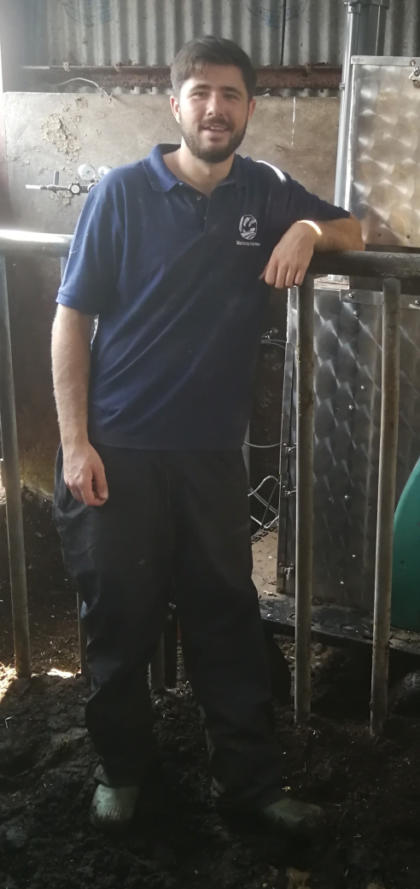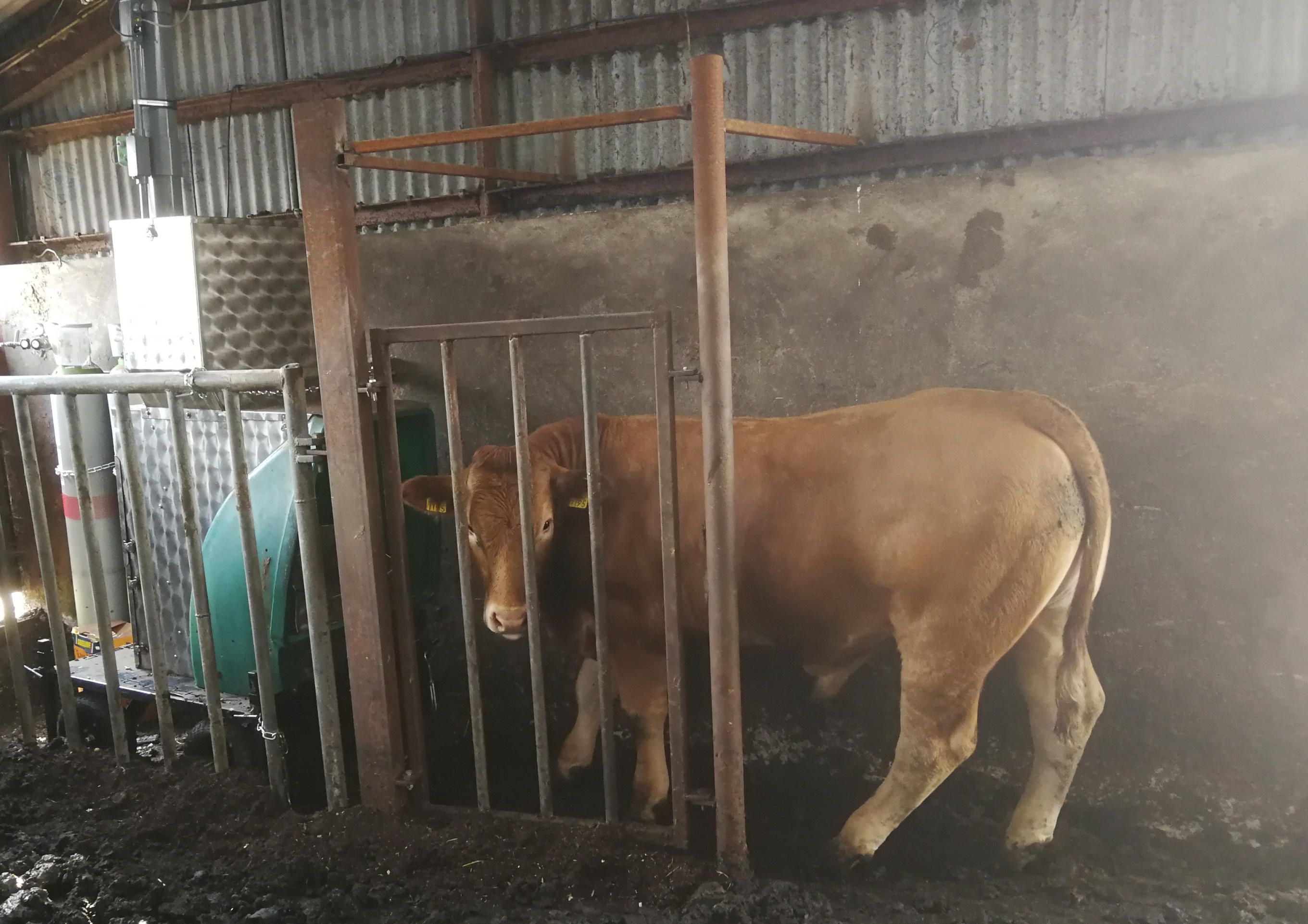Does the cattle gut microbiome affect methane output?
Posted on November 28, 2018 by Paul Smith
The need to feed an ever growing global population while also being required to limit the negative impacts on the environment associated with livestock production is a major challenge for global agriculture. Methane originating from ruminant livestock production is responsible for nearly 40% of global agriculture’s emissions, with cattle identified as the main contributor.

I am a second year Walsh Fellowship PhD student based in Teagasc Grange and registered at University College Dublin. The title of my project is Understanding of the role of diet, host feed efficiency and genetics on the rumen microbiome and environmental outputs in beef cattle.
Here in Ireland in particular, agriculture is the single largest contributor (~30%) to overall Greenhouse Gas emissions, and it is important to develop and implement abatement strategies through dietary management and breeding tools.
Previously, research has established a link between feed efficiency and methane production whereby cattle that are more feed efficient produce less methane. A group of microbes residing in the rumen, known as methanogens, are responsible for the production of methane. Methane production, or methanogenesis, is an energy inefficient process whereby an estimated 6-12% energy intake of an animal is deflected toward methanogensis. This energy could otherwise contribute to animal performance such as growth or milk production.
My research forms part of the international collaborative project, RumenPredict, which aims to improve our understanding of the role of diet, host genetics, and the rumen microbiome on environmental outputs, including methane and nitrous oxide, and economic traits such as feed efficiency. In other words, the project aims to identify DNA-based biomarkers associated with a rumen microbiome that facilitates greater feed efficiency and less environmental output.
In my PhD, we aim to collect data on over 400 beef cattle over the next 2 years. To measure methane emissions, we have installed two GreenFeed Systems in the Irish Cattle Breeding Federation (ICBF) progeny test centre, where the growth performance of progeny from a variety of beef bulls is evaluated.
Research by others has shown host control over the rumen microbiome, with the rumen microbial population varying across breeds and indeed between members of the same breed .This suggests there is a genetic influence on rumen microbiome, allowing for the possibility of breeding animals with a more efficient and environmentally friendly rumen microbiome. During my research, I will collect a rumen sample from each animal to identify which microbes are associated with reduced methane emissions and high feed efficiency. In addition, host DNA will also be collected from each animal and genotyped. Genome wide association studies will be performed to identify DNA biomarkers that are correlated with a rumen microbiome that facilitates reduced greenhouse gas emissions and high production efficiency.

The GreenFeed systems allow for estimates of emissions from individual animals in a commercial setting. Animals are tagged with unique RFIDs and as they approach, the RFID tag is read. Then, the air surrounding the animal is extracted and the amount of methane emitted by the animal is measured.
In addition to this, we have been investigating the impact diet has on methane production and the rumen microbiome. White clover, along with other legumes, is included in the grazing sward due to their unique ability to fix atmospheric nitrogen. White clover has also shown potential in reducing methane emissions from ruminants, with previous research carried out in Teagasc Moorepark, revealing that dairy cows grazing swards with white clover had reduced emissions of methane per kilogram of dry matter intake (also known as methane yield) when compared to cows grazing perennial ryegrass only. To better understand the effect white clover inclusion in the sward had on the rumen microbiome, we investigated if the difference in methane yield between both groups of dairy cows could be explained by alterations to the microbial population. We used an amplicon sequencing approach, whereby we extracted microbial DNA from rumen samples taken from the cows grazing both swards and generated 16S rRNA amplicon libraries for sequencing on the Illumina MiSeq. Indeed we found that the diet altered the rumen microbiome between the two groups with the abundance of key rumen microbes also varying. Interestingly, we uncovered a reduction in specific methanogens in the rumen microbiome of cows grazing the clover swards.
My day varies quite a bit, particularly when we are measuring methane on a group of cattle using the GreenFeed systems. When methane production is being estimated, I first have to train the animals to become accustomed to using the machines on a regular basis. After this, the cattle are monitored to ensure they are routinely attending the machine. In addition to this, maintenance must be carried on the machines weekly.
If I am not at the ICBF progeny test centre, I could be either analysing the methane data or be in the molecular laboratory extracting microbial DNA from rumen samples and generating 16S rRNA libraries for sequencing. Recently I have just finished analysing the rumen microbial sequence data generated from the clover study and now I am in the process of producing a scientific paper from the results. Also, as part of RumenPredict, we aim to produce guidelines that researchers in the field can follow for best practice. As part of this, we are working on a rumen sequencing standard, containing known quantities of specific rumen microbial DNA which can be included in sequencing analysis for quality control purposes. At the moment, I am both working on our standard and in the process of training a group of cattle to use the GreenFeed.
I am quite lucky in that my PhD both has a production and laboratory element to it allowing me to learn many new skills in production and molecular biology. I love being out on the farm working with the cattle as I get to be outdoors, but equally I love working in the lab.
I choose the topic of my PhD project for a number of reasons. I have an interest in genetics and the genetic element of the project greatly appealed to me. In addition I was attracted to the mitigation potential aspect of the project as, climate change and reducing the impacts all sectors have on the environment is a very topical area.
If we discover DNA based biomarkers that are strongly correlated with the rumen microbiome, feed efficiency and methane production, I would hope they can contribute to both national and international breeding programmes to help breed cattle with a microbiome capable of producing less emissions and harnessing more energy from the feed and thus lead to more sustainable and environmentally friendly beef production.

